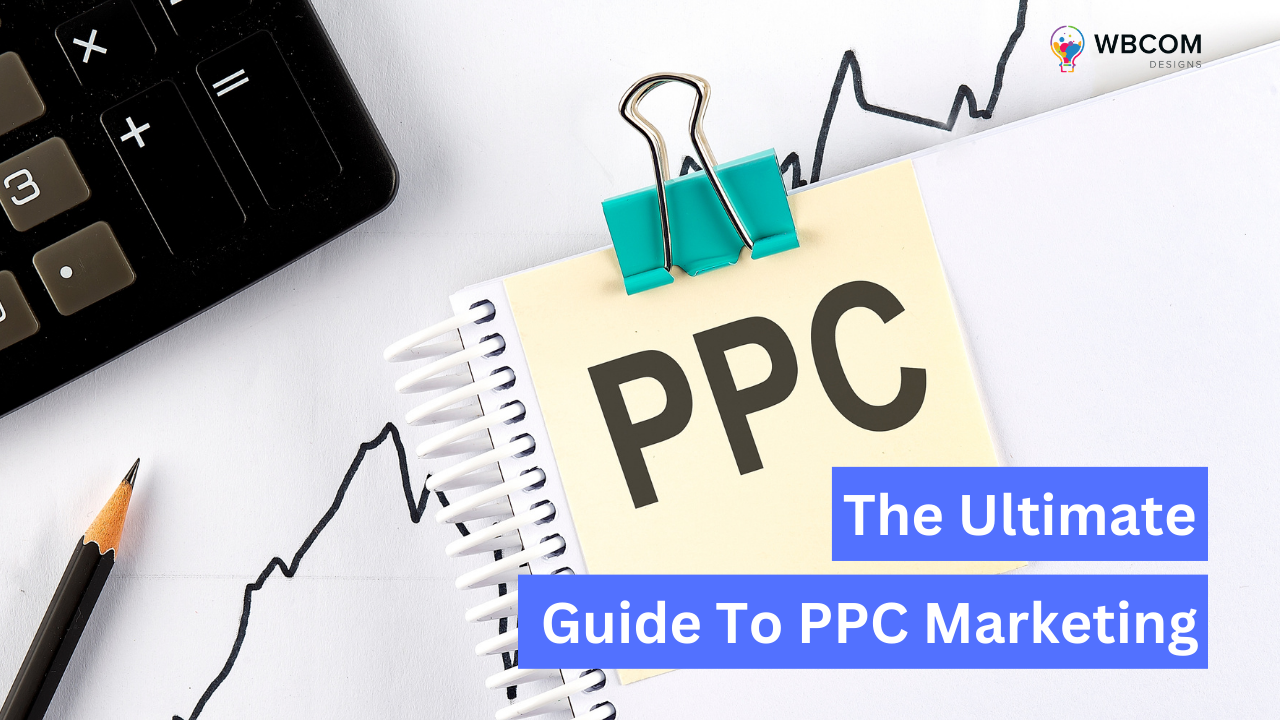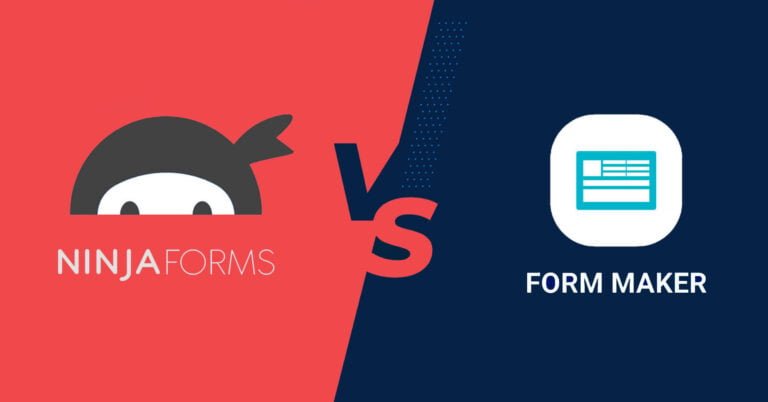PPC (pay-per-click) marketing is a type of online advertising in which advertisers pay a fee each time one of their ads is clicked. It is a highly effective way of driving traffic to a website, generating leads and sales. PPC marketing allows advertisers to bid on specific keywords or phrases relevant to their target audience, and create ads that appear on search engine results pages (SERPs) or on social media platforms.
A well-planned PPC strategy is essential for any business looking to maximize its online advertising efforts. A good PPC strategy involves research, planning, and execution, as well as ongoing optimization and monitoring of the results. By developing a clear and concise PPC strategy, businesses can ensure that their advertising campaigns are aligned with their overall marketing goals and are targeting the right audience with the right message.
The Ultimate Guide to PPC Marketing will provide a comprehensive overview of PPC marketing, from the basics of how it works to advanced strategies for optimizing campaigns. The guide will cover the key elements of a successful PPC campaign, including keyword research, ad creation, targeting options, bidding strategies, and campaign tracking and analysis. It will also explore the importance of landing page optimization and conversion rate optimization in ensuring that PPC campaigns are successful.
Overall, this guide aims to provide a complete roadmap for businesses looking to develop a successful PPC strategy that delivers measurable results.
Table of Contents
ToggleMastering PPC Marketing in 2024: The Ultimate Guide to Building a Winning Strategy
1. Setting Goals and Objectives for PPC Strategy
Setting clear goals and objectives is a critical step in developing an effective PPC (pay-per-click) marketing strategy. Goals and objectives help you define what you want to achieve through your PPC campaign and enable you to measure success. Here are some key points to consider when setting goals and objectives for your PPC strategy:
- Define your target audience: Before setting goals, you need to have a clear understanding of your target audience. Who are your ideal customers? What are their demographics, interests, and online behaviors?
- Identify your business objectives: What do you want to achieve through your PPC campaign? Do you want to increase website traffic, generate leads, boost sales, or enhance brand awareness?
- Set specific, measurable goals: Once you have identified your business objectives, set specific and measurable goals that align with those objectives. For example, if your objective is to increase website traffic, your goal might be to achieve a certain number of clicks or impressions.
- Determine your budget: Your budget will impact the size and scope of your PPC campaign. Be realistic about what you can afford and make sure your goals and objectives are achievable within your budget.
- Choose the right metrics: The metrics you choose to measure the success of your PPC campaign will depend on your goals and objectives. Common metrics include click-through rate (CTR), conversion rate, cost-per-click (CPC), and return on investment (ROI).
By setting clear goals and objectives for your PPC strategy, you can focus your efforts on achieving specific outcomes and measure the success of your campaign.
2. Understanding Your Target Audience
Understanding your target audience is a crucial step in creating a successful PPC strategy. Without a clear understanding of your audience, your PPC campaigns may not generate the desired results.
To begin, you should define your target audience by identifying the demographic, geographic, psychographic, and behavioral characteristics of your ideal customer. This information can be gathered through market research, customer surveys, and website analytics.
Next, you should use this information to create buyer personas, which are fictional representations of your target audience. Buyer personas should include information such as age, gender, income, job title, interests, pain points, and preferred communication channels.
Once you have a clear understanding of your target audience and their needs, you can create targeted PPC campaigns that speak directly to their interests and pain points. This can result in higher click-through rates, lower bounce rates, and more conversions.
3. Keyword Research and Analysis
Keyword research and analysis is a crucial step in developing an effective PPC strategy. It involves researching and analyzing relevant keywords that your target audience is using to search for your products or services on search engines. By understanding the intent behind the keywords, you can create ads that are relevant to the user’s search queries, resulting in higher click-through rates (CTR) and conversion rates.
To conduct keyword research, you can use various tools such as Google Keyword Planner, SEMrush, Ahrefs, or Moz Keyword Explorer. These tools allow you to generate a list of relevant keywords, including long-tail and negative keywords, that can be used to create your PPC campaigns. It is essential to consider factors such as search volume, competition, and cost-per-click (CPC) when selecting keywords for your campaigns.
Once you have identified your keywords, you can analyze them further to gain insights into your competitors’ PPC strategies. By analyzing their ads and landing pages, you can identify gaps in the market and create more effective campaigns that differentiate you from your competitors. Additionally, monitoring your keyword performance over time allows you to optimize your campaigns and maximize your ROI.
4. Creating Effective PPC Ad Campaigns
Creating effective PPC ad campaigns is crucial for achieving success in PPC marketing. In this section, we will discuss the key elements of a successful PPC ad campaign:
- Ad Copy: The ad copy is the written content that appears in your ad. It should be relevant, and engaging, and highlight the benefits of your product or service.
- Keywords: The keywords you target in your campaign should be relevant to your business and aligned with your ad copy.
- Ad Extensions: Ad extensions allow you to add additional information to your ad, such as phone numbers, locations, and links to your website.
- Ad Format: There are various ad formats to choose from, such as text ads, image ads, and video ads. The format you choose should be based on your target audience and campaign objectives.
- Landing Pages: A landing page is the web page that a user is directed to after clicking on your ad. It should be relevant to your ad copy and offer a clear call to action.
- Ad Scheduling: Ad scheduling allows you to choose specific times and days of the week for your ads to appear. This can help you target your audience when they are most likely to be online.
- Bid Management: Bid management involves setting the maximum amount you are willing to pay for each click on your ad. It is important to monitor and adjust your bids regularly to ensure you are getting the best possible return on investment.
By optimizing these elements, you can create effective PPC ad campaigns that drive traffic, generate leads, and increase conversions.
5. Landing Page Optimization
Landing page optimization is a crucial aspect of PPC marketing because it directly impacts the effectiveness of your campaigns. Once a user clicks on your ad, the landing page is where they will be directed. It’s important to optimize your landing page to provide a positive user experience and effectively communicate your message.
Here are some tips for landing page optimization:
- Match your ad copy: Ensure that the messaging and design on your landing page are consistent with the ad copy that the user clicked on. This will help to create a seamless user experience.
- Clear and concise message: Make sure that the landing page has a clear and concise message that highlights the benefits of your product or service. This will help to keep the user engaged and interested in your offering.
- Call to action (CTA): Include a clear CTA on your landing page that guides the user toward the desired action, such as filling out a form or making a purchase.
- Design and layout: The design and layout of your landing page should be clean, visually appealing, and easy to navigate. Use a clear hierarchy and appropriate use of whitespace to guide the user’s attention towards the important elements of the page.
- Mobile optimization: With the increasing use of mobile devices, it’s important to ensure that your landing page is optimized for mobile users. This means that the page should be responsive, load quickly, and have a design that works well on smaller screens.
By optimizing your landing pages, you can improve the overall effectiveness of your PPC campaigns and drive better results.
6. Tracking and Measuring PPC Performance
Tracking and measuring the performance of your PPC campaigns is crucial to determining their success and identifying areas for improvement. Here are some key performance indicators (KPIs) to track and measure:
- Click-through rate (CTR): This is the percentage of people who click on your ads after seeing them. A high CTR indicates that your ads are relevant and engaging to your target audience.
- Conversion rate: This is the percentage of people who take a desired action, such as making a purchase or filling out a form, after clicking on your ads. A high conversion rate indicates that your landing pages are effective and that your ads are reaching the right people.
- Cost per click (CPC): This is the amount of money you pay for each click on your ads. Tracking your CPC can help you stay within your budget and optimize your bids for maximum ROI.
- Cost per acquisition (CPA): This is the amount of money you pay to acquire a new customer through your PPC campaign. By tracking your CPA, you can ensure that your campaigns are cost-effective and profitable.
- Quality score: This is a metric used by Google to evaluate the relevance and quality of your ads and landing pages. A high quality score can lower your CPC and improve your ad position.
- Return on ad spend (ROAS): This is the amount of revenue generated for every dollar spent on PPC advertising. Tracking your ROAS can help you determine the overall effectiveness of your campaigns.
By regularly monitoring these KPIs and making adjustments as needed, you can ensure that your PPC campaigns are driving results and delivering a positive ROI.
Also Read: How to Use Data Analytics to Improve Your Online Marketplace?
Staying Up-to-Date with PPC Trends and Best Practices
Staying updated on the latest PPC trends and strategies is essential for campaign success. With the PPC landscape constantly evolving, it’s crucial to adapt strategies to stay competitive. This holds particularly true for Amazon PPC advertising, where specialized software can offer valuable insights and optimization tools. By incorporating Amazon PPC software into your strategy, you can ensure your campaigns remain effective and drive optimal results in the ever-changing world of online advertising.
Here are some tips for staying up-to-date with PPC trends and best practices:
- Attend industry events: Attend industry events such as conferences, workshops, and seminars to learn about the latest trends and best practices in PPC advertising. These events often feature presentations by industry experts and provide opportunities to network with other professionals in the field.
- Follow industry leaders: Follow industry leaders and influencers on social media platforms such as Twitter, LinkedIn, and Facebook. Many of these individuals share valuable insights and tips on PPC advertising and related topics.
- Read industry publications: Subscribe to industry publications such as Search Engine Journal, Search Engine Land, and PPC Hero to stay informed about the latest news and trends in PPC advertising.
- Join online communities: Join online communities such as Reddit, Quora, and LinkedIn groups to connect with other PPC professionals and learn from their experiences.
- Experiment with new tools and techniques: Experiment with new PPC tools and techniques to stay ahead of the curve. Test out new ad formats, bidding strategies, and targeting options to see what works best for your campaigns.
By staying up-to-date with the latest PPC trends and best practices, you can ensure that your campaigns remain effective and competitive in the ever-changing world of PPC advertising.
Benefits of PPC Advertising
PPC advertising offers several benefits that make it an attractive marketing strategy for businesses. Some of these benefits include:
- Targeted advertising: With PPC advertising, businesses can target their ads to specific audiences based on various factors such as location, device, and search intent. This targeted approach helps businesses reach the right people at the right time, increasing the chances of conversions.
- Cost-effective: With PPC advertising, businesses only pay for the clicks their ads receive. This makes it a cost-effective marketing strategy, as businesses can set a budget and only pay for the clicks that fit within that budget.
- Measurable results: PPC advertising provides measurable results, allowing businesses to track their return on investment (ROI) and make data-driven decisions about their advertising campaigns.
- Quick results: PPC advertising can drive traffic and conversions to a website quickly, as opposed to other marketing strategies that may take longer to see results.
- Flexibility: PPC advertising is flexible, allowing businesses to adjust their campaigns based on performance and make changes as needed to optimize their results.
In the next section, we’ll explore some powerful PPC strategies that businesses can adopt in 2024 to improve their results even further.
Also Read: How to Create a Seamless User Experience in Your Online Marketplace?
Enhancing Your PPC Strategy with Ad Maven
In addition to the PPC strategies outlined in this guide, consider leveraging the capabilities of Ad Maven, a leading Ad network, to further enhance your PPC campaigns. Ad Maven can complement and augment the points discussed in this article in several ways:
High-Quality Traffic: Ad Maven is renowned for delivering high-quality Pop and Push traffic. This ensures that advertisers effectively reach their target audience, enhancing the overall impact of their PPC campaigns.
Targeted Advertising Solutions: Ad Maven offers advertisers targeted solutions, allowing for campaigns to be tailored based on demographics, interests, and online behaviors. This level of customization ensures that your ads are more relevant to your audience, potentially increasing engagement and conversions.
Overcoming PPC Challenges: The potential pitfalls or challenges in PPC marketing, as mentioned in this article, can be addressed with Ad Maven’s features. These solutions can help in navigating the complexities of PPC marketing, making your campaigns more efficient and effective.
By incorporating Ad Maven into your PPC toolkit, you can provide your readers with valuable recommendations and a comprehensive approach to PPC marketing.
Powerful PPC Strategy to Adopt in 2024
PPC (Pay-Per-Click) advertising is an essential component of a digital marketing campaign, and it’s a constantly evolving field. To stay ahead of the competition, it’s crucial to adopt a powerful PPC strategy that takes advantage of the latest trends and techniques.
Here are some powerful PPC strategies to adopt in 2024:
- Personalized Ad Campaigns – By using data on your target audience, you can create personalized ad campaigns that are more likely to engage potential customers. This means segmenting your audience into smaller groups and creating ads that are tailored to their needs and interests.
- Embrace Automation – Automation can help you optimize your ad campaigns, save time, and increase ROI. Using AI-powered tools like Google’s Smart Bidding, you can set your bids automatically and get the most value out of your ad spend.
- Focus on Voice Search – With the increasing popularity of voice assistants like Siri, Alexa, and Google Assistant, it’s important to optimize your PPC strategy for voice search. This means using long-tail keywords, creating conversational ad copy, and making sure your website is mobile-friendly.
- Use Video Ads – Video ads are becoming more popular, and for good reason. They are more engaging than text or image ads, and can help you tell a story or showcase your product in action. Platforms like YouTube, Facebook, and Instagram offer a variety of video ad formats to choose from.
- Don’t Ignore Bing Ads – While Google Ads dominates the PPC market, Bing Ads can still be a valuable channel for reaching your target audience. Bing has a smaller market share, but it’s less competitive, which means you can often get lower cost-per-click (CPC) rates.
- Incorporate Remarketing – Remarketing is a powerful technique for targeting users who have already interacted with your brand. By showing ads to people who have visited your website or engaged with your social media content, you can remind them of your brand and encourage them to take action.
- Experiment with New Ad Formats – The PPC landscape is always changing, and new ad formats are constantly emerging. By experimenting with new ad formats like shoppable ads, augmented reality ads, or interactive ads, you can stay ahead of the competition and engage your audience in new ways.
By adopting these powerful PPC strategies, you can stay ahead of the competition, reach your target audience more effectively, and get the most value out of your ad spend.
Robust PPC strategies that will bring success in 2024
PPC (Pay-Per-Click) advertising has become an integral part of digital marketing, and having a robust PPC strategy is essential for businesses to achieve their marketing goals. In 2024, the world of PPC marketing is expected to become even more competitive and challenging. Therefore, businesses must adopt effective PPC strategies that can help them stand out from the competition.
Here are some robust PPC strategies that can bring success in 2024:
- Use AI and Automation Tools: In 2024, AI and automation tools will play a critical role in PPC marketing. These tools can help businesses to automate their PPC campaigns and optimize them for better results. AI can also help businesses identify the best keywords, ad copy, and landing pages for their PPC campaigns.
- Focus on Long-Tail Keywords: Long-tail keywords are more specific and targeted, and they have a higher chance of converting. In 2024, businesses should focus on using long-tail keywords to improve the effectiveness of their PPC campaigns.
- Utilize Video Ads: Video ads are becoming increasingly popular in PPC advertising. They can be used to tell a story, showcase a product, or provide valuable information to the audience. In 2024, businesses should consider using video ads in their PPC campaigns to stand out from the competition.
- Leverage Remarketing: Remarketing is a powerful tool that can help businesses to target people who have already shown an interest in their products or services. In 2024, businesses should leverage remarketing to retarget their audience and increase conversions.
- Optimize Landing Pages: Landing pages are critical in PPC advertising because they can make or break a campaign. In 2024, businesses should focus on optimizing their landing pages to improve the quality score of their campaigns and increase conversions.
- Test and Experiment: Testing and experimenting with different PPC strategies is essential for businesses to stay ahead of the competition. In 2024, businesses should continue to test and experiment with different PPC strategies to identify what works best for them.
Final Thoughts
PPC marketing can be a powerful tool for driving traffic and conversions to your website. However, success in PPC advertising requires a well-planned and executed strategy that aligns with your business goals and objectives. By setting clear goals, adopting best practices, and implementing robust strategies, you can increase the effectiveness of your PPC campaigns and achieve a strong return on investment. Remember, ongoing optimization and refinement are critical to maximizing the impact of your PPC advertising. We encourage you to use this guide as a resource to help you develop and implement a successful PPC strategy in 2024 and beyond.
Interesting Reads:
WordPress Plugins That Help In Doubling Your Website Traffic








